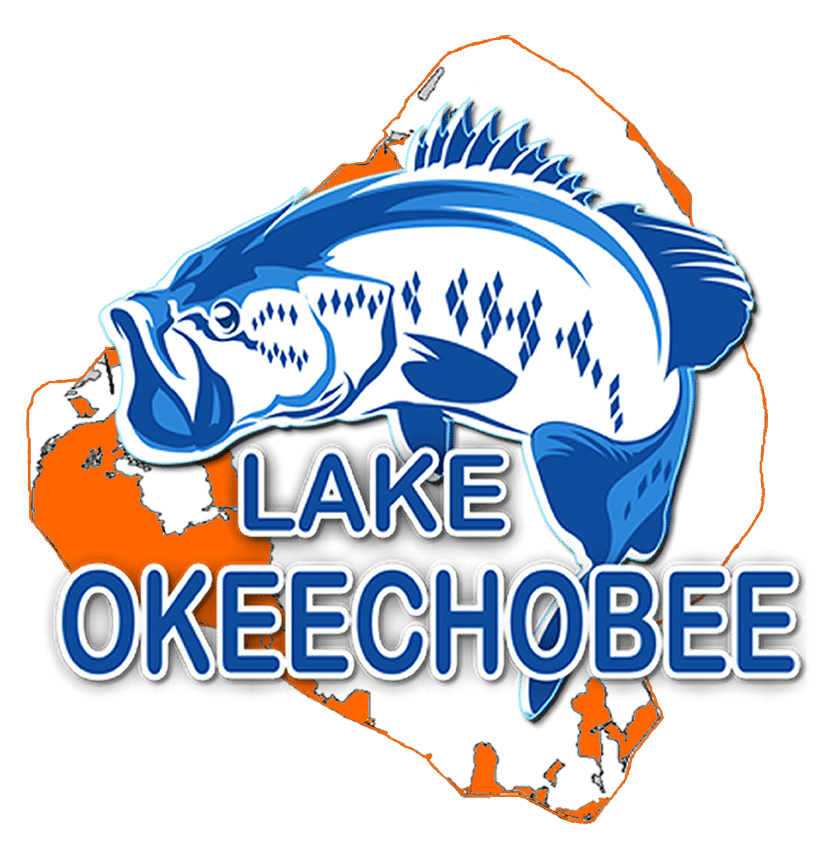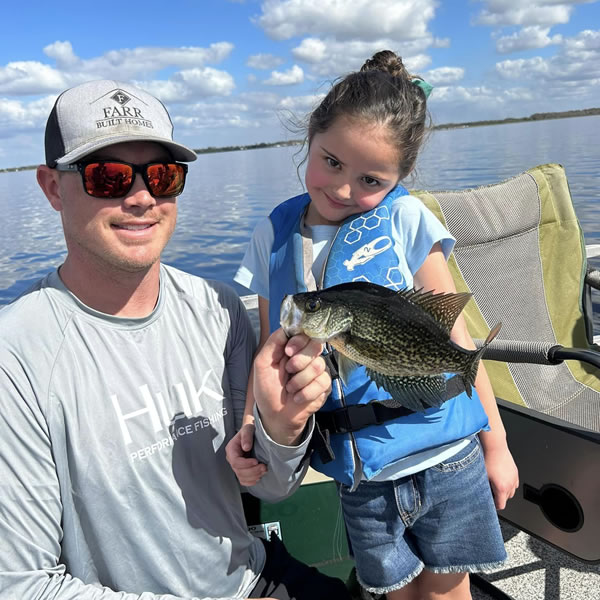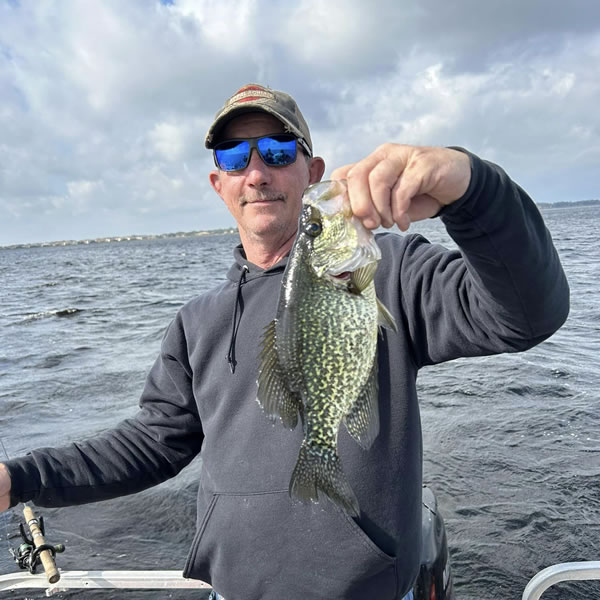Lake Okeechobee Crappie Fishing
The Okeechobee Crappie fishing, speckled perch or speck’ as they are called throughout the State of Florida, is the most sort after panfish on Lake Okeechobee. Although the Florida crappie can be caught during the summer, they are at their best from late fall to early spring.
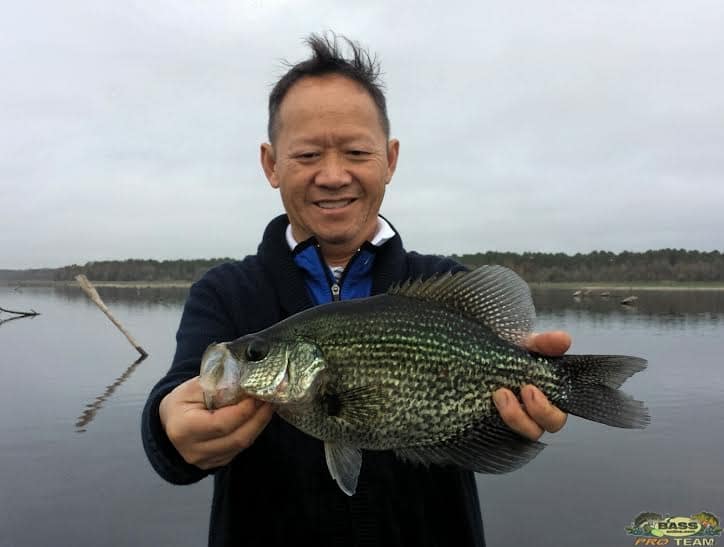 Go to Lake Okeechobee freshwater fishing with your family and friends together for an affordable day of Okeechobee crappie fishing on Lake Okeechobee. Lake Okeechobee comprises a 730-square-mile area and is the second-largest natural lake in the U.S., holding more than a trillion gallons of water.
Go to Lake Okeechobee freshwater fishing with your family and friends together for an affordable day of Okeechobee crappie fishing on Lake Okeechobee. Lake Okeechobee comprises a 730-square-mile area and is the second-largest natural lake in the U.S., holding more than a trillion gallons of water.
Most fishing takes place along the lake’s southeastern, west, and north portions within a mile of the shoreline. Look for hyacinths, hydrilla, and other water plants where big bass ambush shiners, bluegills, and other scaled groceries. They also pounce on frogs, crickets, worms, grasshoppers, and pretty much any fish smaller than itself. Plastic imitations of those baits work well.
You know the deal black crappies speckled perch to most Floridians are about as smart as a dead bird, but fortunately, they are a lot more abundant. Stick a minnow in their face, set the hook, and start heating the frying pan, as we say here on Okeechobee.
The fish are out somewhere, but finding them can take some work. As well as some electronics to help you. Basically, the fish usually hang near large schools of shad, which are easily spotted on a depth finder. You can run cross-hatch patterns across the lake at speed until you mark a couple of baitfish schools, then go back to them and start trolling in that area.
They’ll typically hang in eight to 25 feet of water at this time of year—shallower on Lake Okeechobee, deeper in the clear canals. Some guys toss a couple of marker buoys to help them map out a trolling route, or if you have a GPS, you can turn on the tracking function and let that map start your trolling course, with waypoints punched in where you’ve spotted baitfish.
The winner of a national championship crappie fish off this year used a Blakemore Roadrunner with a minnow attached and a red hook suspended above it with a second
minnow. The Roadrunner is a little horse-head jig with a tiny spinner attached below the head. Many other jigs and spinners work well, including the Beetle Spin, Hal Fly, Blue Fox jig, Crappie Buster, Crappie Magic, Crappie Pro, etc.
Lake Okeechobee Crappie Fishing Techniques
When Okeechobee crappie fishing, does the red hook make any difference? Hard to say, but enough people who fish for money believe in them that they’re worth a try. Some new models of hooks are made to stand out horizontally from the main line, which acts as a mini-spreader and helps the bite.
The big difference in jigs is the weight when Okeechobee Crappie fishing. If you’re fishing 14 feet of water daily with 15-mph winds, it may take a 1⁄ 4-ounce head to keep the lure down within a couple of feet of the bottom where the fish will likely be biting. On a calm day, on the other hand, you’ll catch more fish with a smaller head, down to 1⁄ 64 ounces. Take a selection to match whatever conditions you may face.
Colors are another factor that impacts the catch rate. I have had it proven to me when Okeechobee crappie fishing repeatedly that some color combos work better than others. And that the effective combo varies from lake to lake. It seems illogical, but the fish actually do sometimes want a yellow head, green body, yellow tail feather combo in the Kissimmee River on the north end of Lake Okeechobee.
For example, while around Clewiston on the south end of Lake Okeechobee, just a few miles west on the north shore, they might prefer a redhead with a gray body and gray tail feather. Considering that jigs don’t really look like minnows, whatever the color. Weirdly, the fish have a color preference, but at times they definitely do.
Choices of Lures for Okeechobee
Whatever the lure choice, you won’t catch nearly as many specks on a 20-pound test as you will on six. And you’ll catch even more fish on a four-pound line. We suspect the lure sinks deeper on the lighter, thinner lines, so it stays in the strike zone better. The visibility of the line could be a factor, too, as could the flex of thinner mono, giving a better action to the jig. Of course, when that rogue 5-pound large mouth grabs the jig, you will have your hands full with a 4-pound test. But that’s one of life’s more pleasant surprises. A careful hand with four will whip any speck that ever lived.
Speaking of which, they did not call them paper mouths for no reason. Actually, Okeechobee crappie fishing mouths are as soft as you will find. But it’s not a bad name because the skin around their mouths is a membrane so thin that you can see through it. Naturally, it tears easily if you try to poll them really fast aboard, so a landing net is an essential part of fishing for specks of a pound and up—and you will find plenty of them in open water and the rivers and canals on Lake Okeechobee.
In these areas, they’ll typically hang in eight to 25 feet of water at the right time of year. Sallower in the winter, deeper in the clear canals in summer at Lake Okeechobee fishing hot spots.
Some guys toss a couple of marker buoys to help them map out a trolling route, or if you have a GPS, you can turn on the tracking function and let that map start your trolling course, with waypoints punched in where you’ve spotted baitfish.
The winner of a national championship crappie fish off this year used a Blakemore Roadrunner with a minnow attached and a red hook suspended above it with a second
minnow. The Roadrunner is a little horse-head jig with a tiny spinner attached below the head. Many other jigs and spinners work well, including the Beetle Spin, Hal Fly, Blue Fox jig, Crappie Buster, Crappie Magic, Crappie Pro, etc.
Okeechobee Crappie Fishing Seasons
Unfortunately, it’s not always that easy, particularly in winter. Just before the significant migration to shoreline cover to spawn, typically in January, February, and March. The largemouth bass on Okeechobee takes the stage as the biggest star. But anyone who’s jousted with feisty bluegill, tenacious crappie, or a scrappy peacock bass knows the challenge and fun of these light-tackle showdowns. It would be a virtual sin to start any discussion about Florida’s freshwater fishing scene other than with Lake Okeechobee.
The Lake Okeechobee crappie size limit by bag limit for crappie (speckled perch) is 25 per person daily. The possession limit is two days bag limit per licensed angler.
Here’s a lake map of the local rivers and canals and Lake Okeechobee Crappie fishing that is worthy of a visit.
Lake Okeechobee Crappie Guide by Location
City of Okeechobee, North Side of Lake Okeechobee
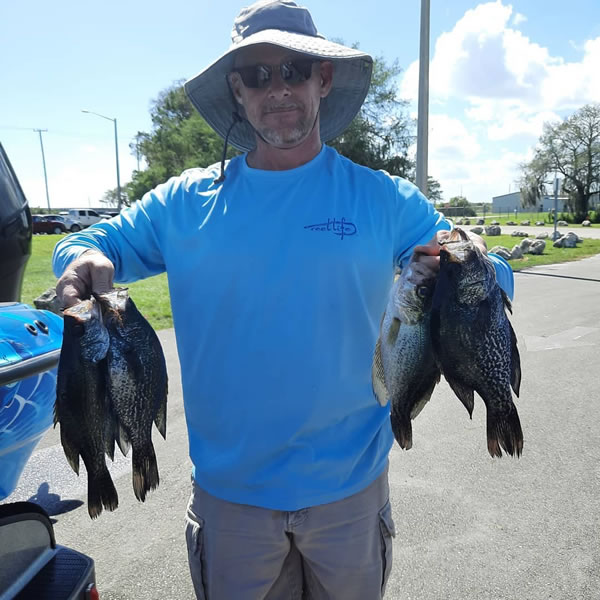
Okeechobee, FL

Okeechobee, FL
